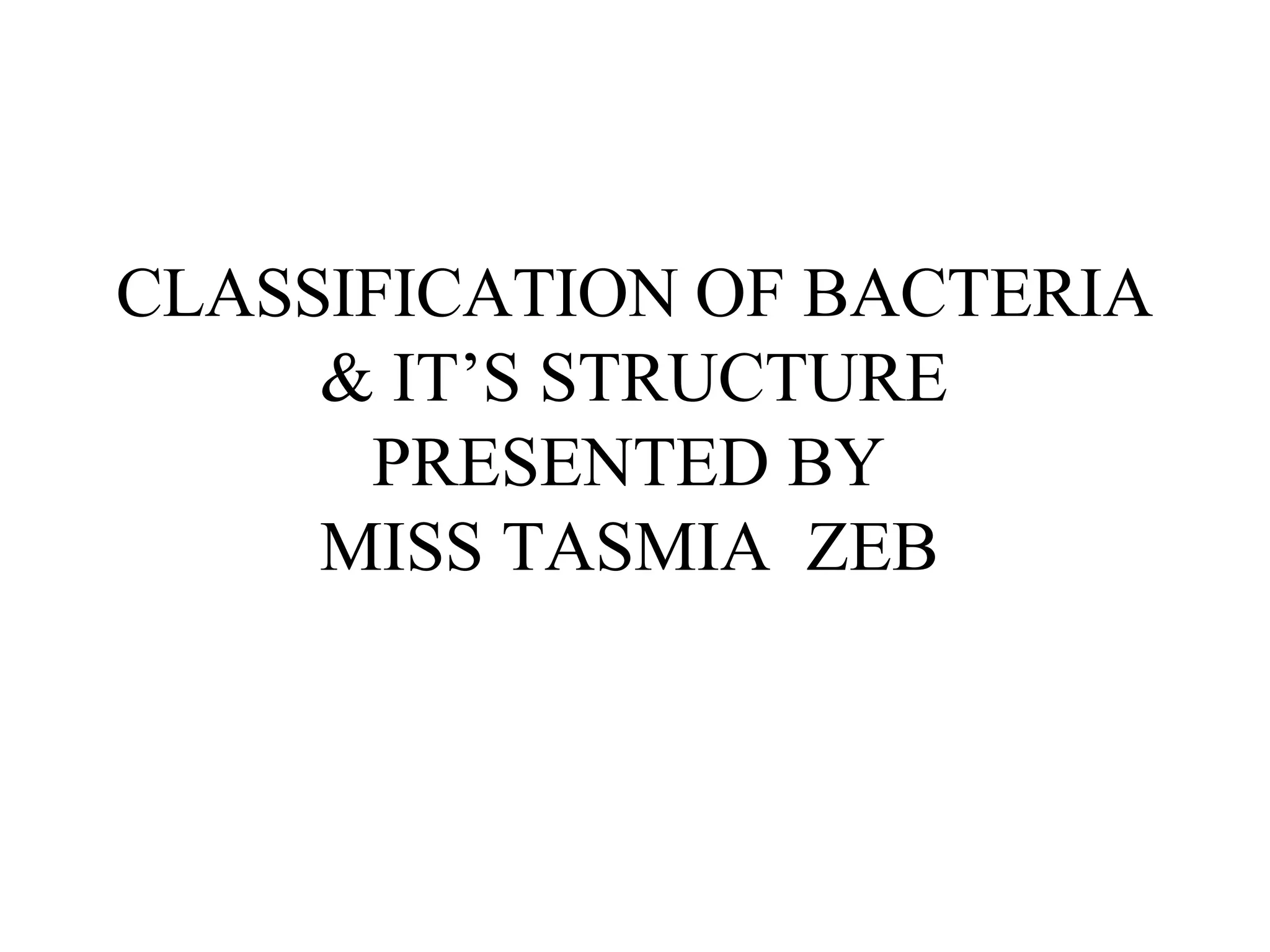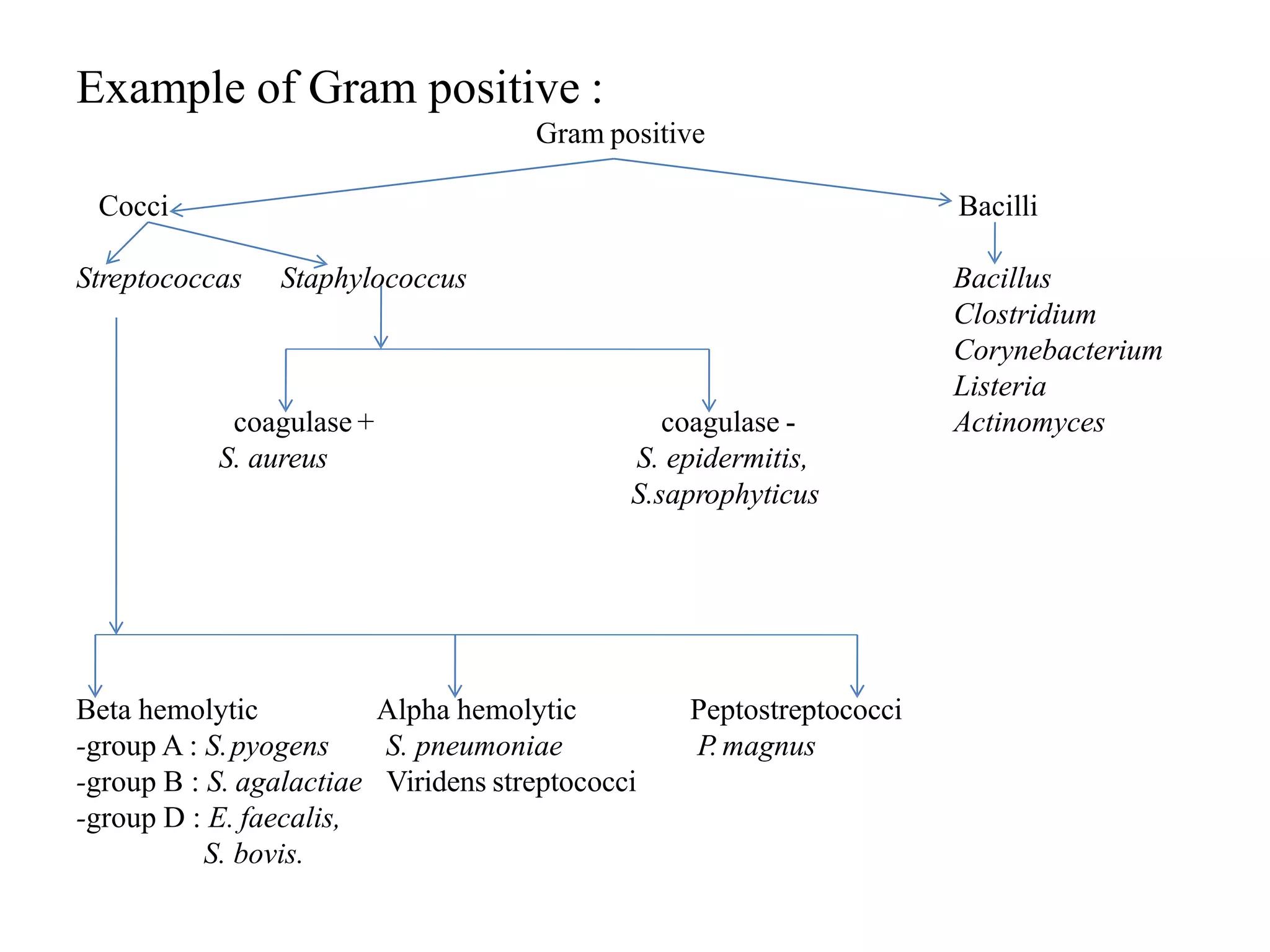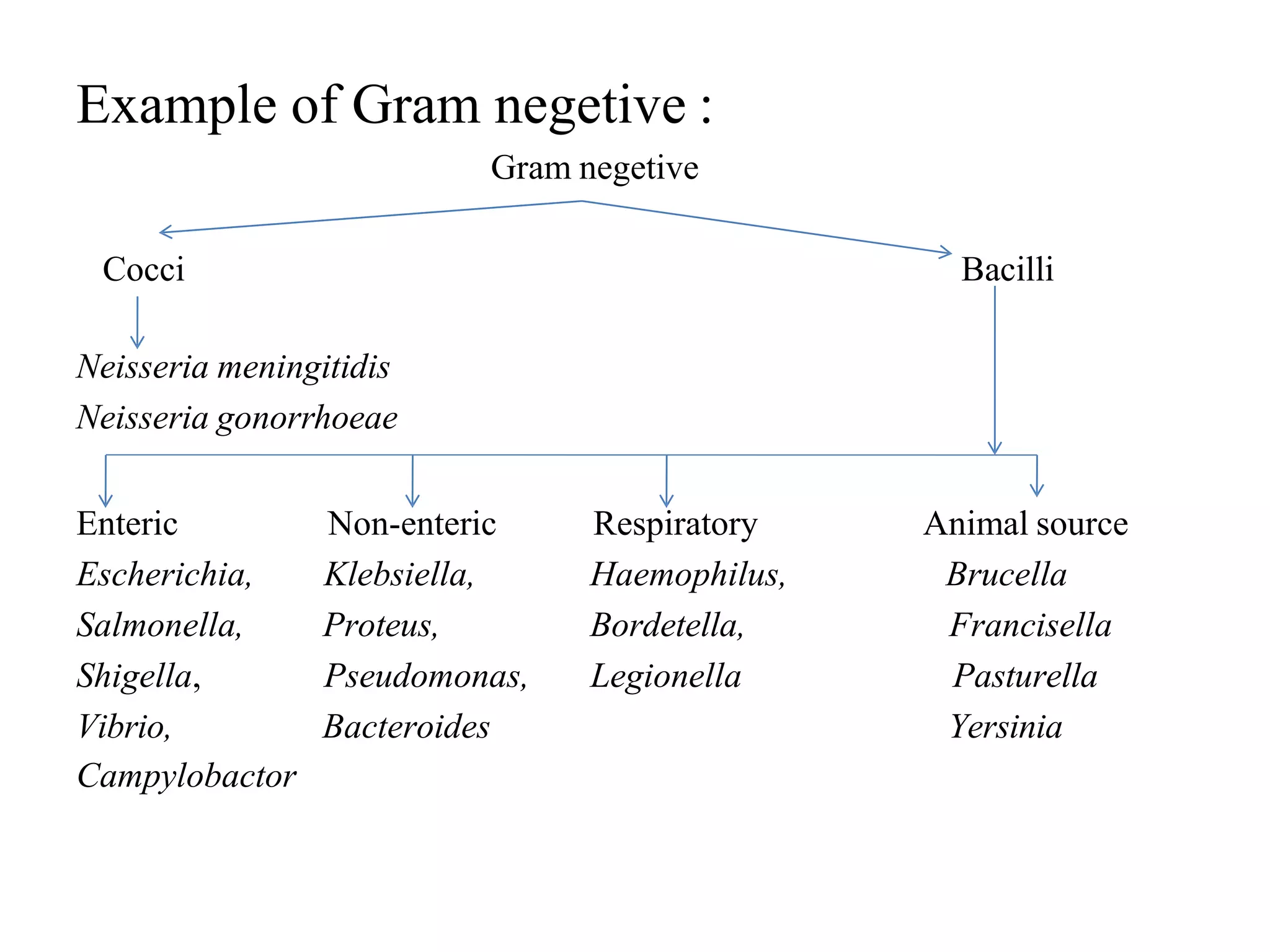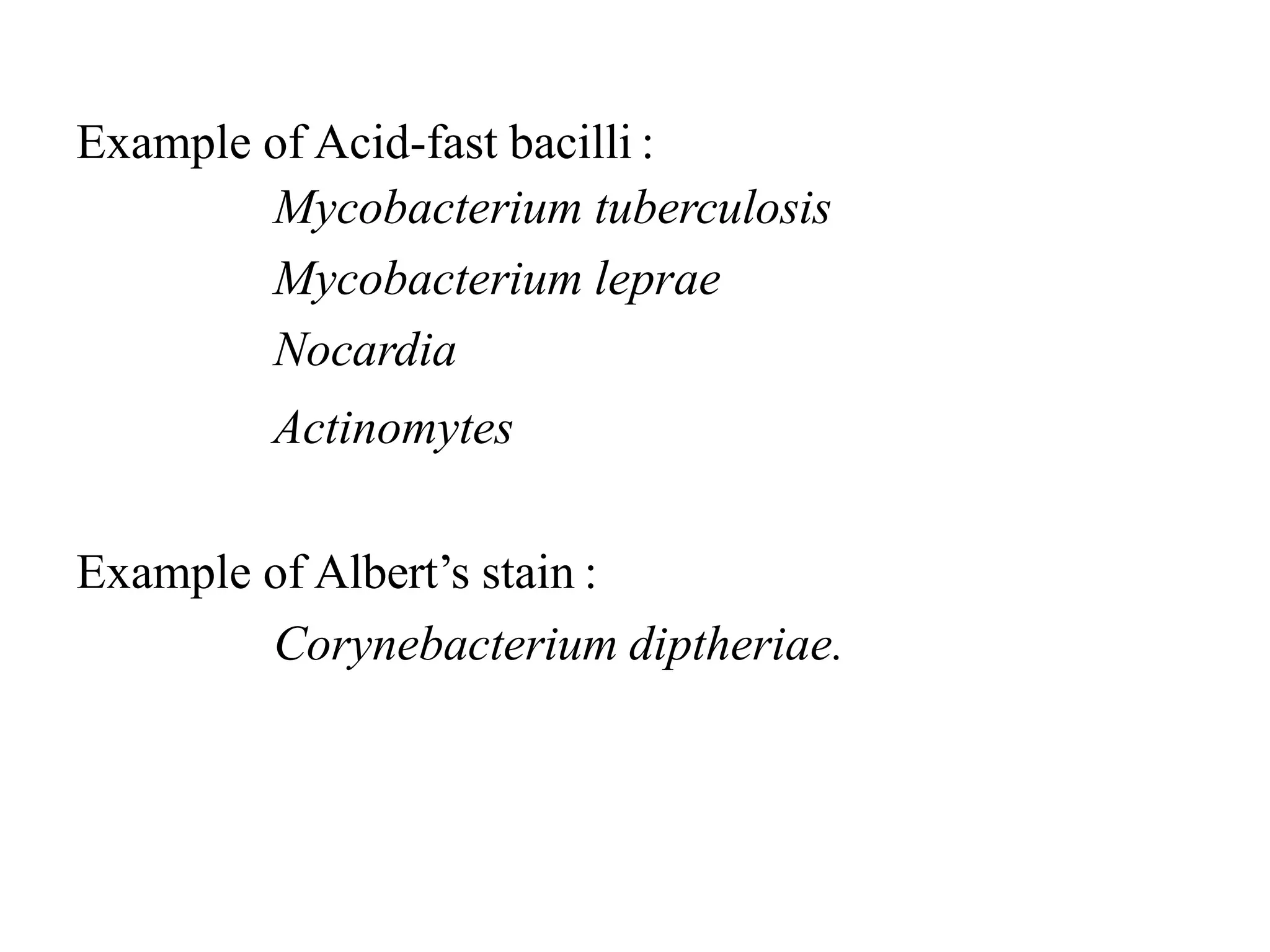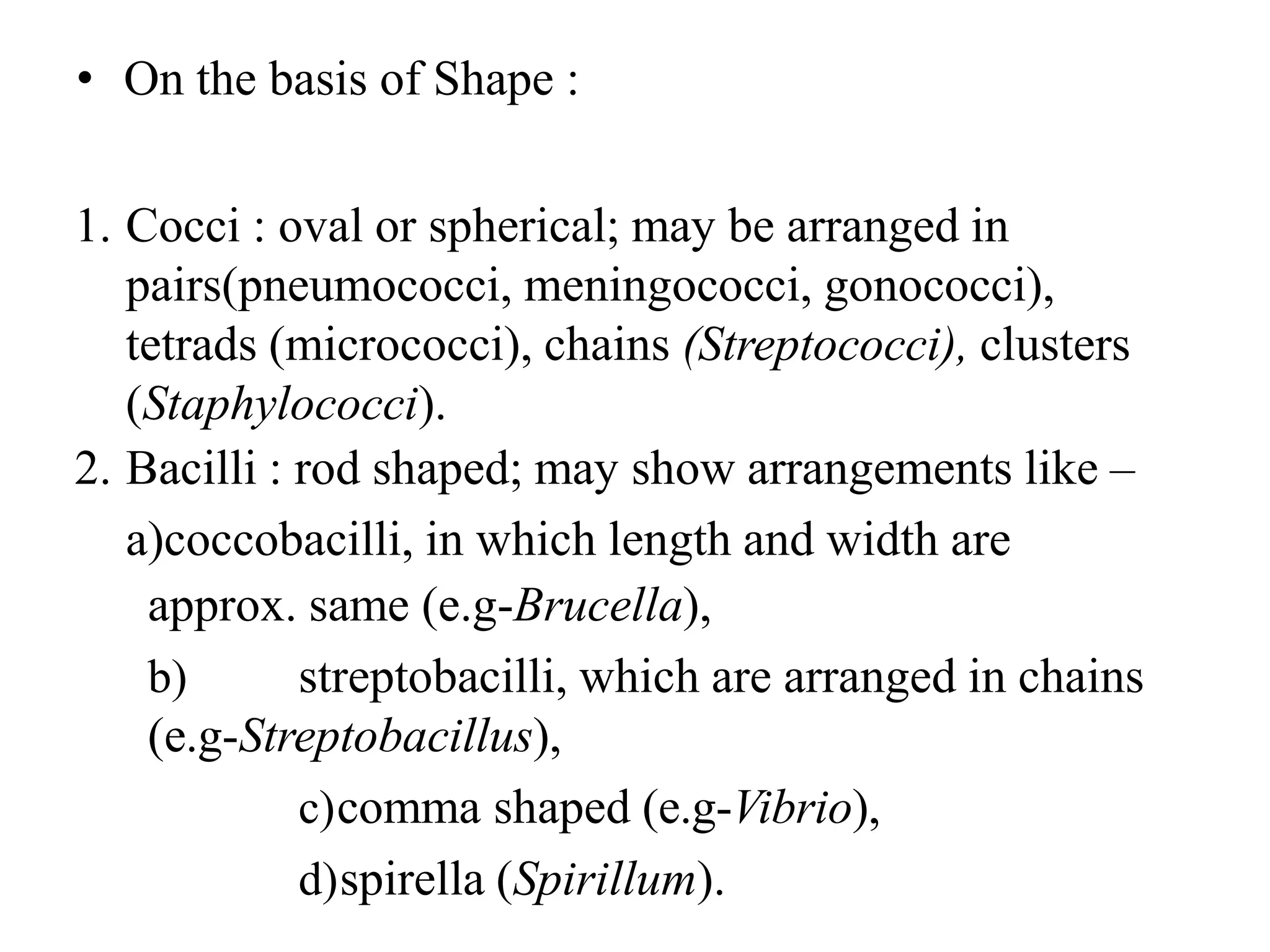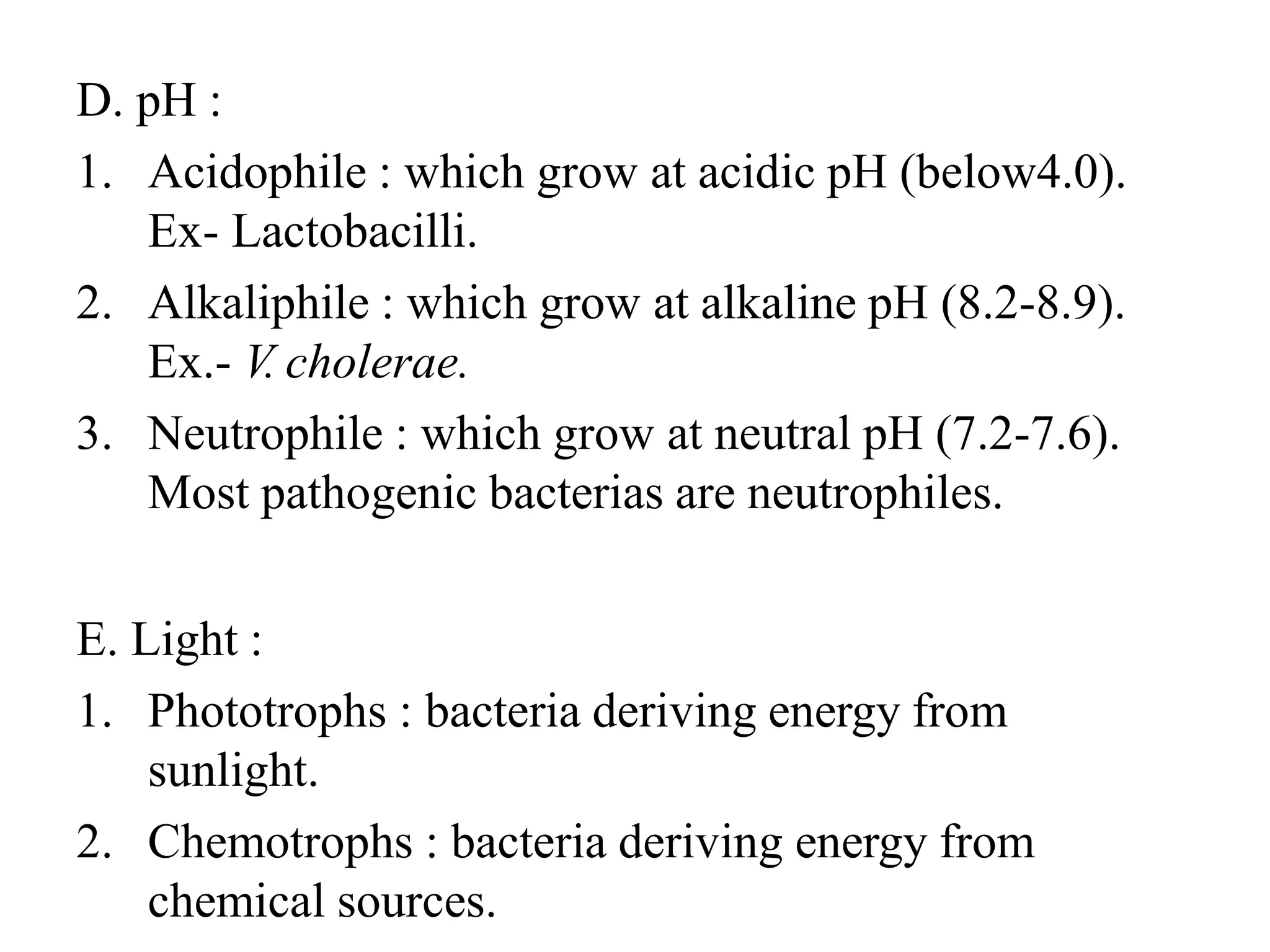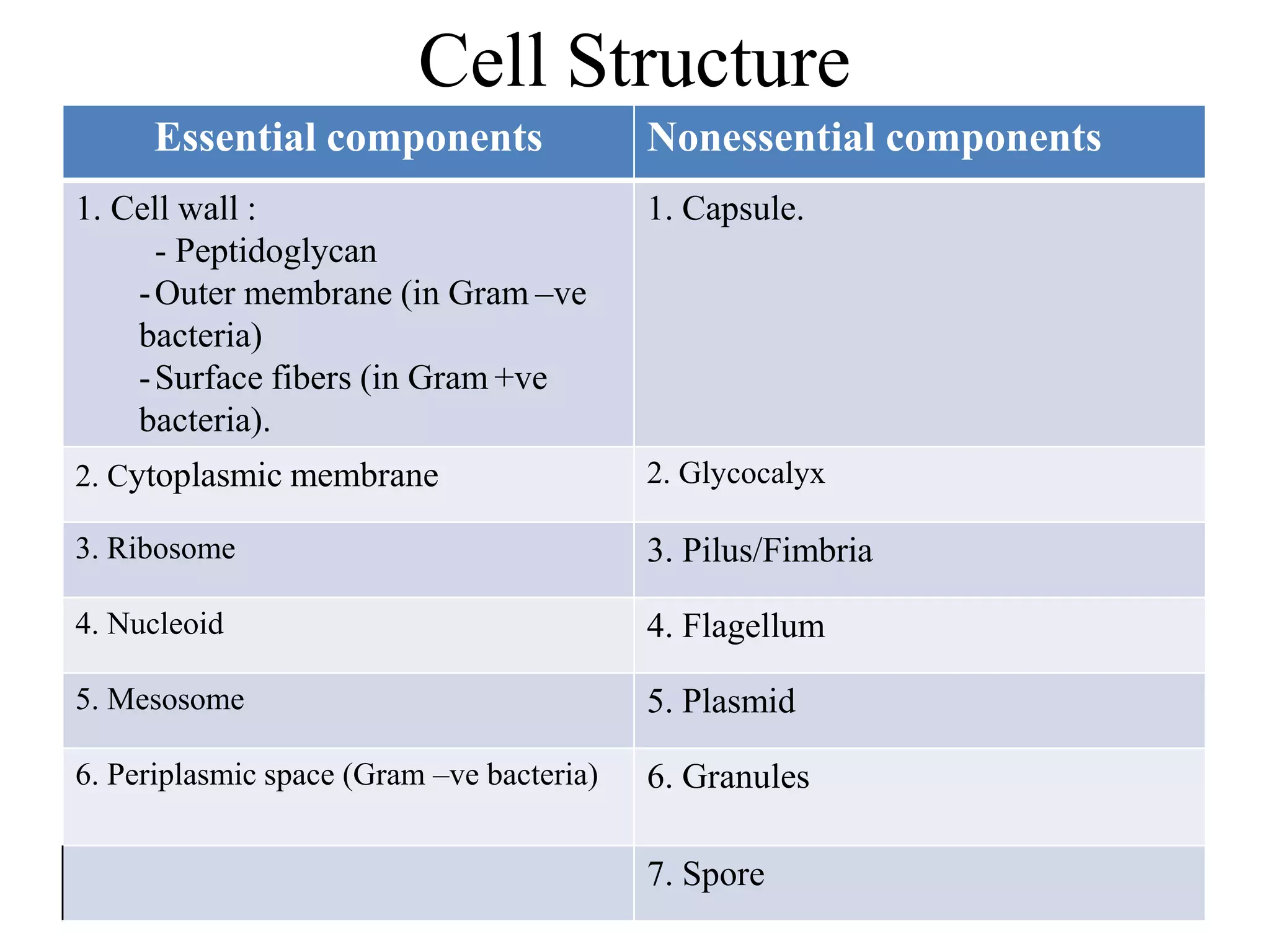This document discusses the classification and structure of bacteria. It covers topics such as classification based on staining, shape, growth requirements, flagella, and motility. It also describes the key components of the bacterial cell structure, including the cell wall, cell membrane, cytoplasm, nucleoid, capsule, and flagella. Gram-positive and Gram-negative cell walls are compared, highlighting differences in thickness, composition and structure.
